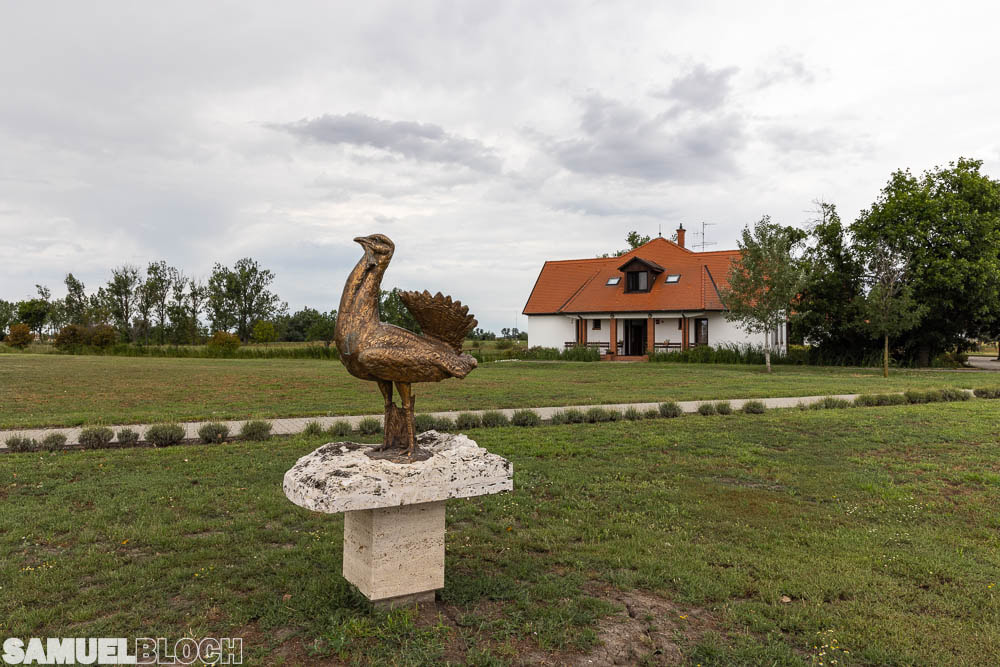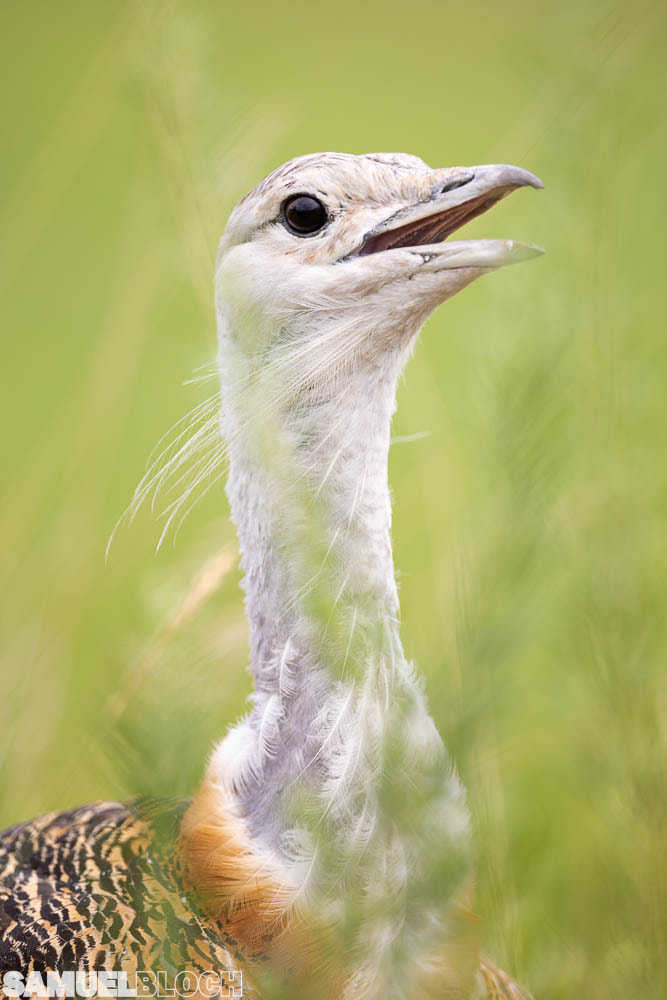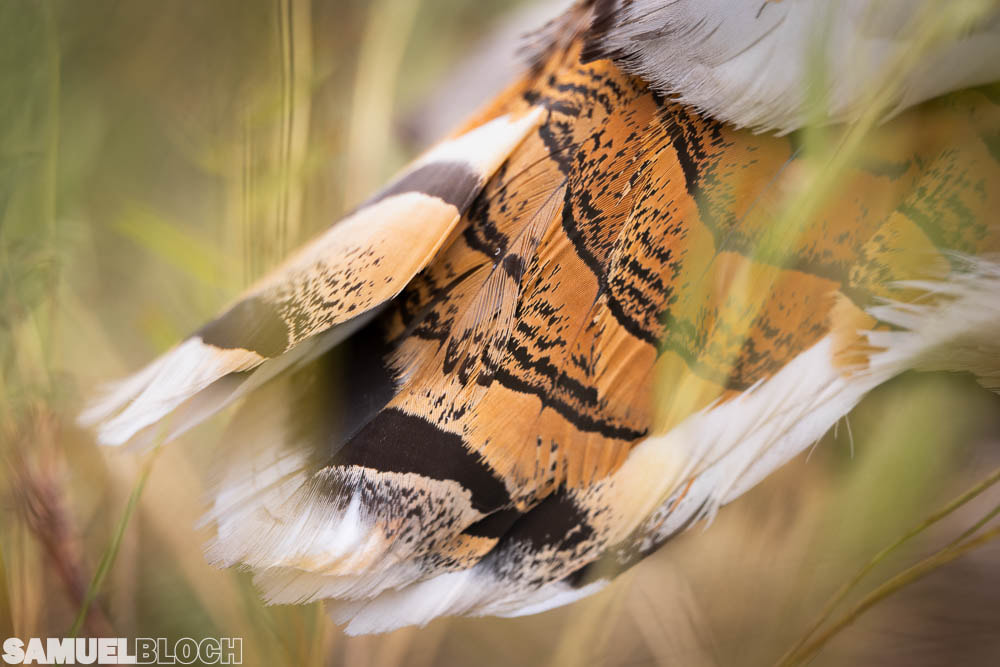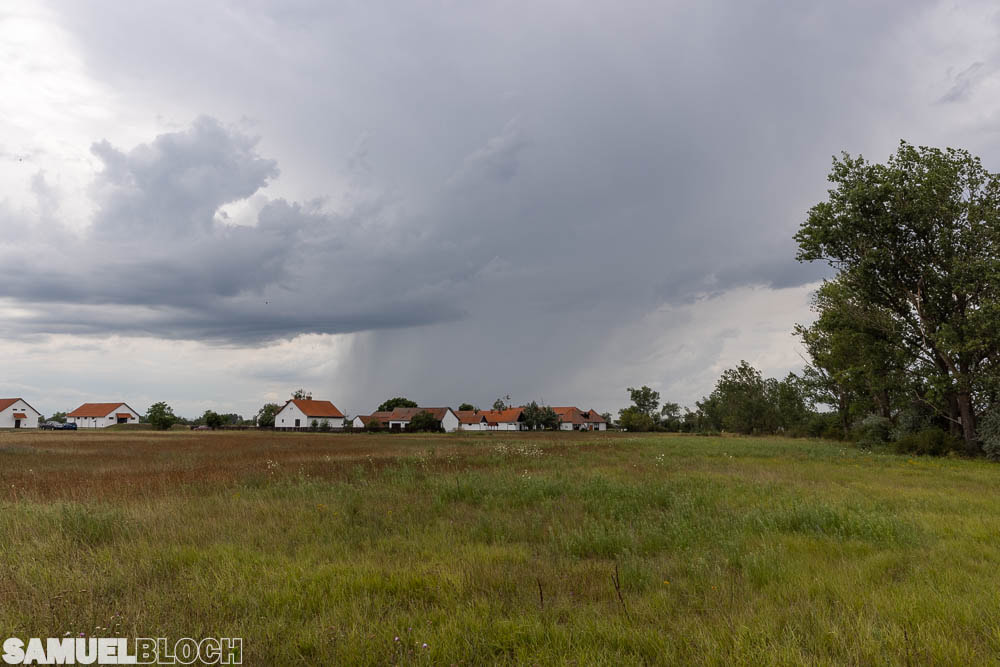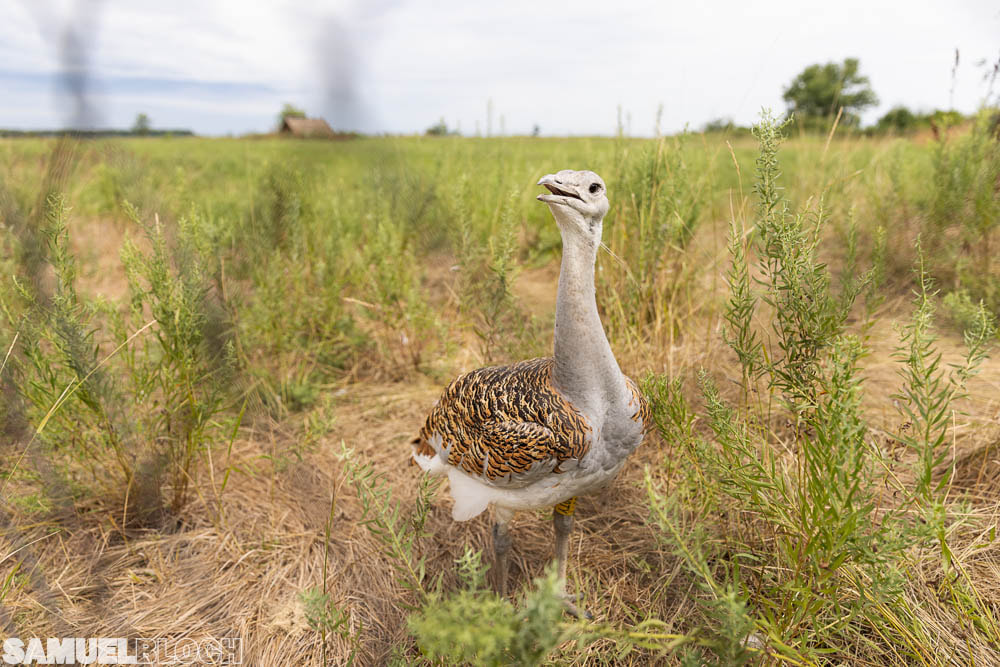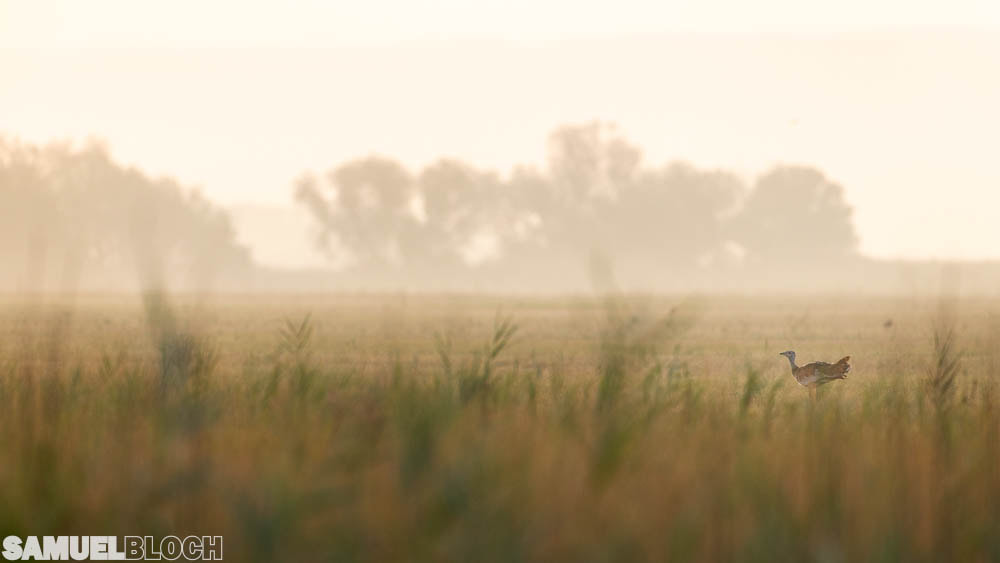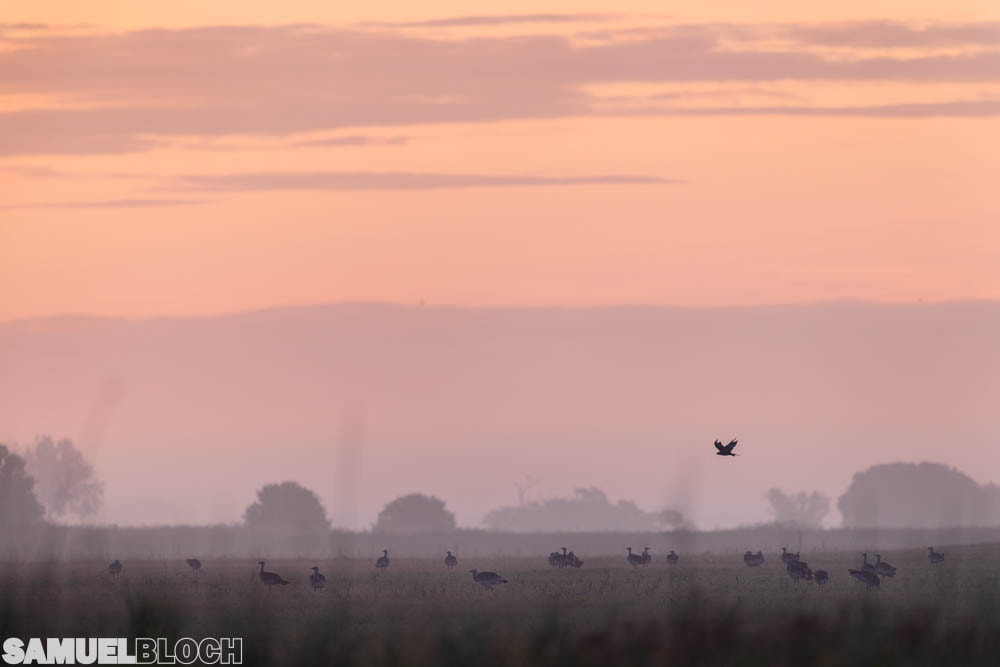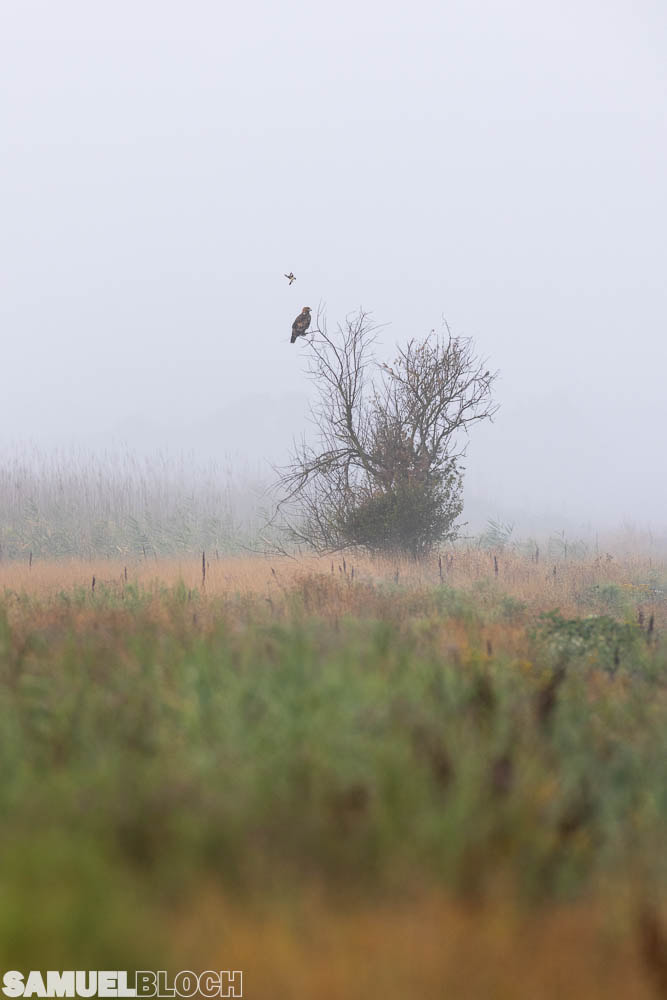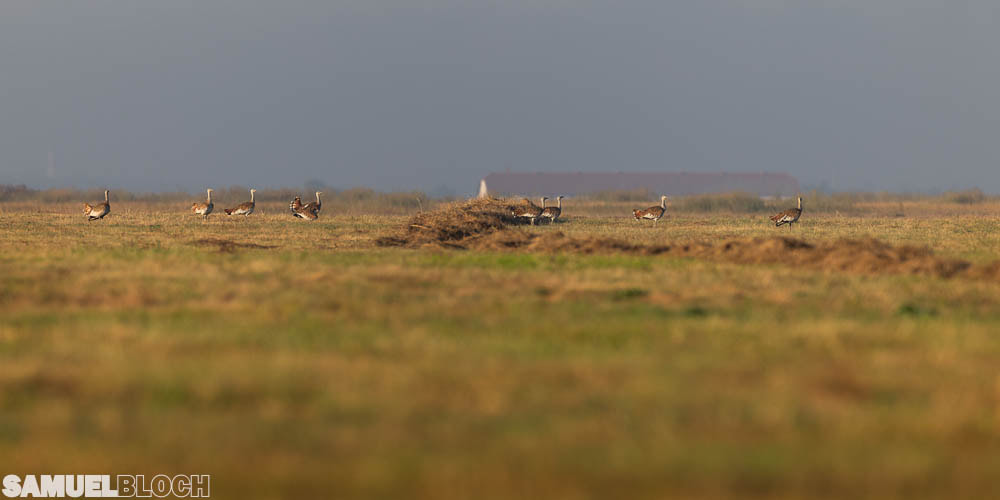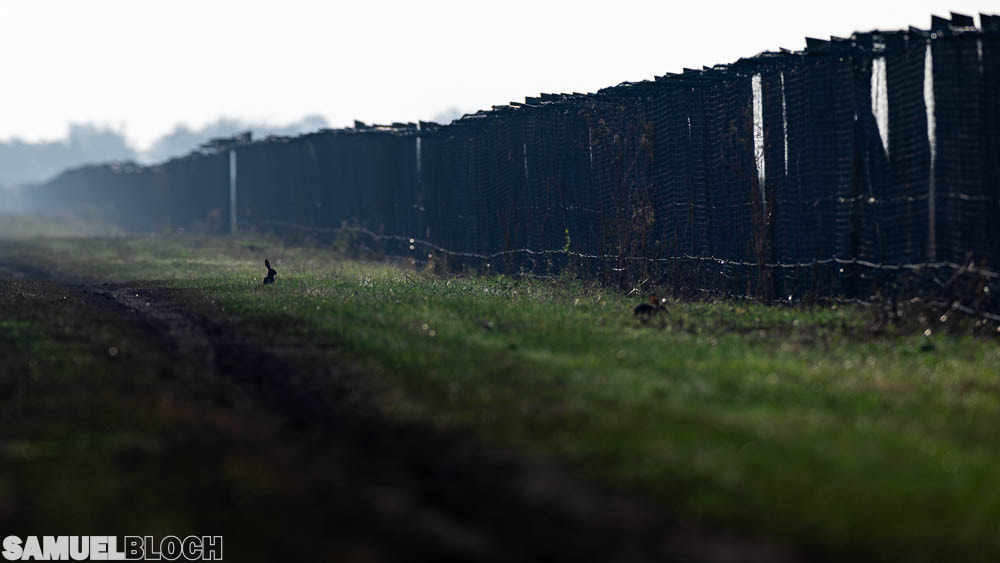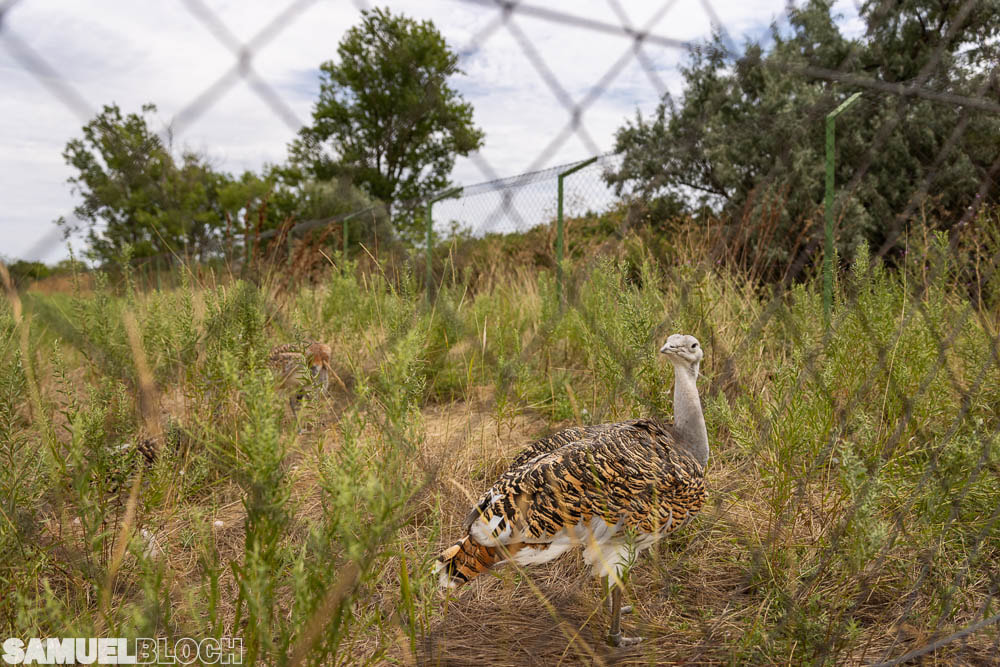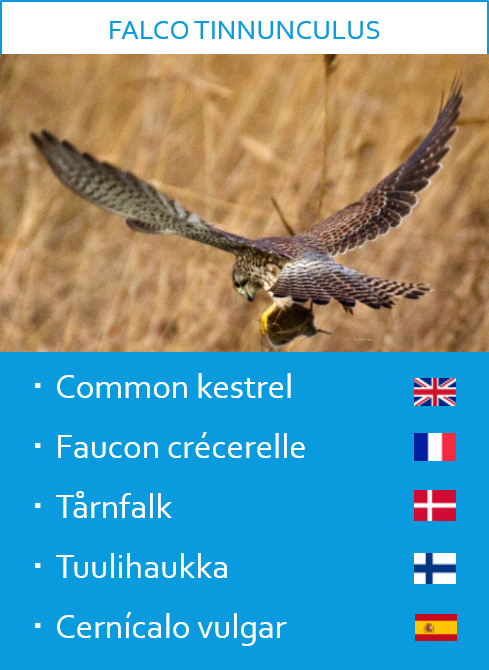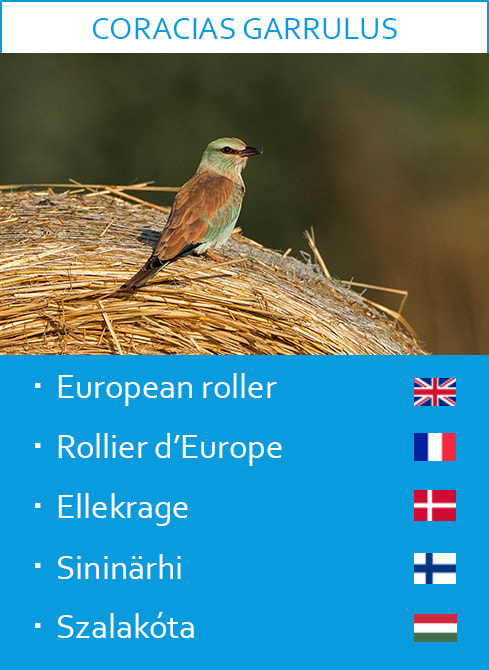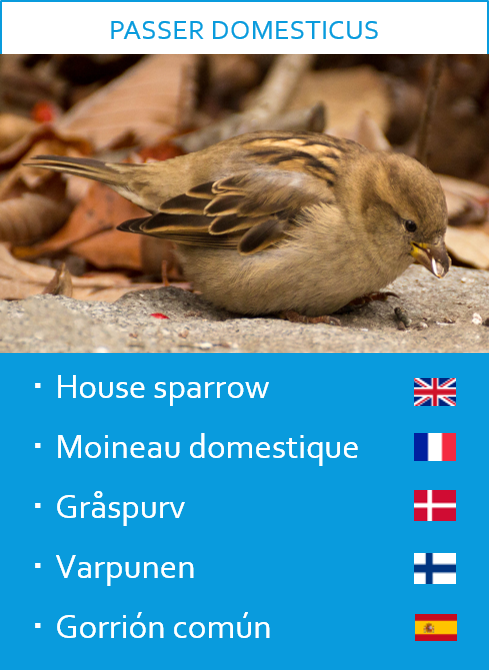|
If you've followed me for a while, you know there's a bird in Hungary I'm absolutely passionate about: the Great bustard (Otis tarda). This great "chicken", the heaviest flying bird in Europe, is a threatened species, but it's also an icon of the Hungarian Great Plains and is the subject of a preservation plan. As I do for all my projects, I did some background research on the topic, and discovered something very interesting: in the south-eastern part of the country, there is a captive rearing program that collects eggs at risk, hatches them and releases the chicks into the wild. Intrigued, I scheduled a trip there in August with my friend Marci. There is no true wilderness left in Hungary, and the few remaining wildish places are scattered around. As a result, many national parks in the plains are fragmented. Körös-Maros National Park is no exception. The Dévaványa area is home to the reintroduction centre. There is also a small museum, conference rooms, simple accommodation, a campsite, technical buildings and barns for the various traditional farm animal breeds. The first highlight of our overnight stay was the encounter with 3 captive bustards. Sadly, these males were hurt during the reintroduction process and deemed unable to survive in the wild. They are now the mascots of the area, as they live in an enclosure near the visitor centre. To me, they were a unique opportunity to get up close with these secretive birds, as they are shy in the wild. Even though the chicken wire was in the way, I could admire their cryptic plumage and create intimate portraits. The surrounding land held typical grassland wildlife: Brown hare (Lepus europaeus), Common kestrel (Falco tinnunculus), Red-backed shrike (Lanius collurio)... Near the buildings, the incessant passage of Common voles had created "open-air tunnels" linking actual tunnel entrances. I set up my camera near one and controlled it remotely to capture images of those tiny and fast creatures! In the morning, we had booked a drive through the national park with ranger Fruzsina. We departed as the sun rose, and discovered a place filled with life. Not only does it hold one of the largest populations of Great bustards in Hungary, but it's also where the Eastern imperial eagle is most common! I had never seen so many of them, and though we could never approach them, I still got my first nice images of them. The concentration of birds of prey is so high in the region because hunting is forbidden, so their preys (pheasants, hares) thrive, and so do they. Fruzsina was a well of knowledge about the region and its wild denizens, so we asked lots of questions and learnt a great deal. For instance, we learnt that Great bustards like to spend the night in open fields to keep their plumage as dry as possible from condensation, so as to remain able to fly. They will find shelter in higher grass later during the day. Above: Common pheasant (Phasianus colchicus), Great bustard and European roller (Coracias gracculus) We also learnt a lot about the reintroduction process, for instance that bustards don't get attached to their human nurses. The day we were there, some of them were released into a 400-ha enclosure that keeps terrestrial predators, such a foxes, away. There, they would learn how to fly, little by little. In the autumn, wild flocks visit the area and "adopt" the young ones... and that's how they find their way back to the wild. Fascinating! We briefly saw the rearing centre, but we were not allowed to take pictures. Still, that tour was a fantastic introduction to the region. To me, the abundance of birds left a taste of "what if". What if humans hadn't altered the land so much? What if humans could let go of hunting? What if humans could live alongside wild predators? In that sense, Dévaványa is a small, if imperfect, window into the past, and a very valuable reminder of the beauty that's out there. I only found out about the place through personal research and machine-translation of a page in Hungarian. However, our guide spoke perfect English, was willing to share her knowledge and stopped every time I wanted to take a picture! Absolutely brilliant! This makes me wish it was easier for people to learn about this tour, because it is a wonderful experience. Now you know, though, so next time you visit Hungary, forget about the hides that everyone visits and discover the magic of bustards and eagles in Dévaványa ;-) - learn more on the Körös-Maros National park website BIRD INVENTORYSign up for the email list and never miss any Story from the Wild
0 Comments
Leave a Reply. |

